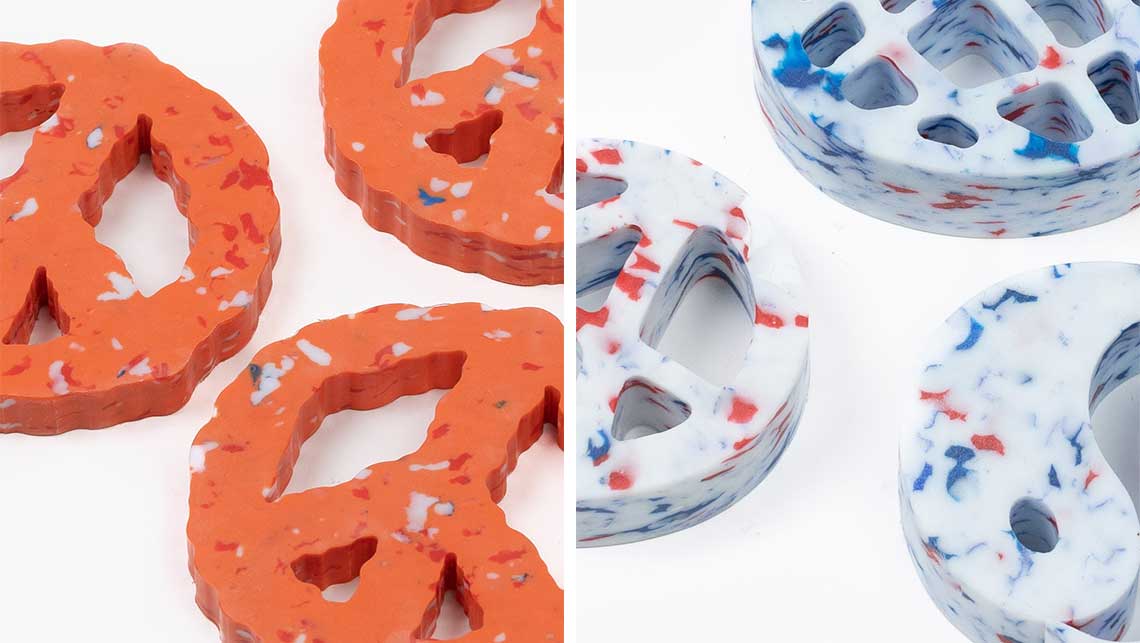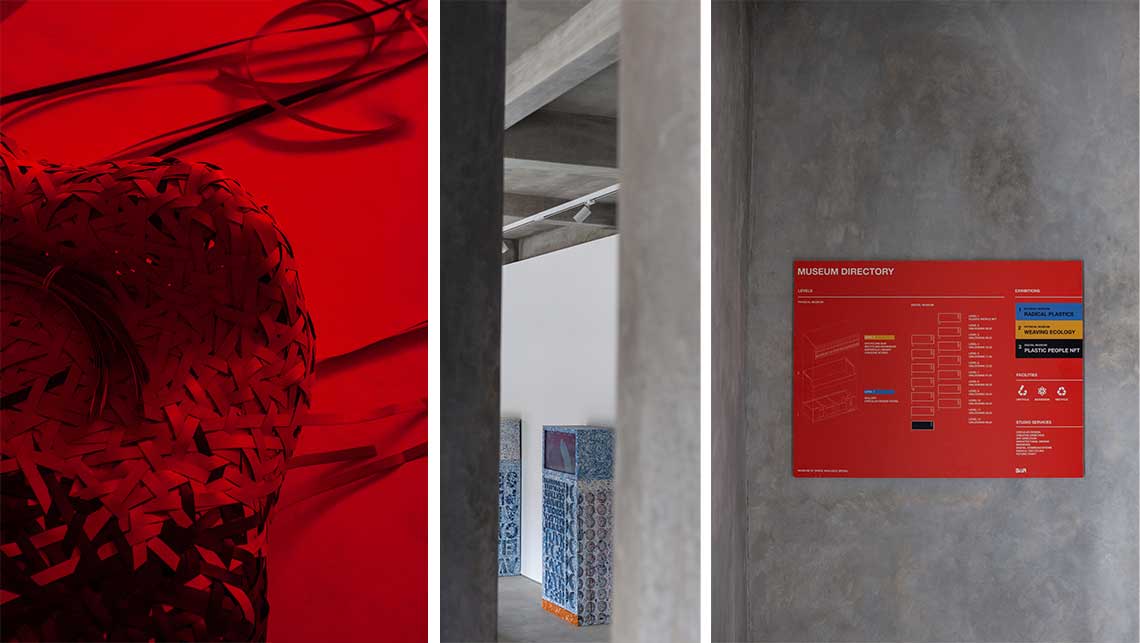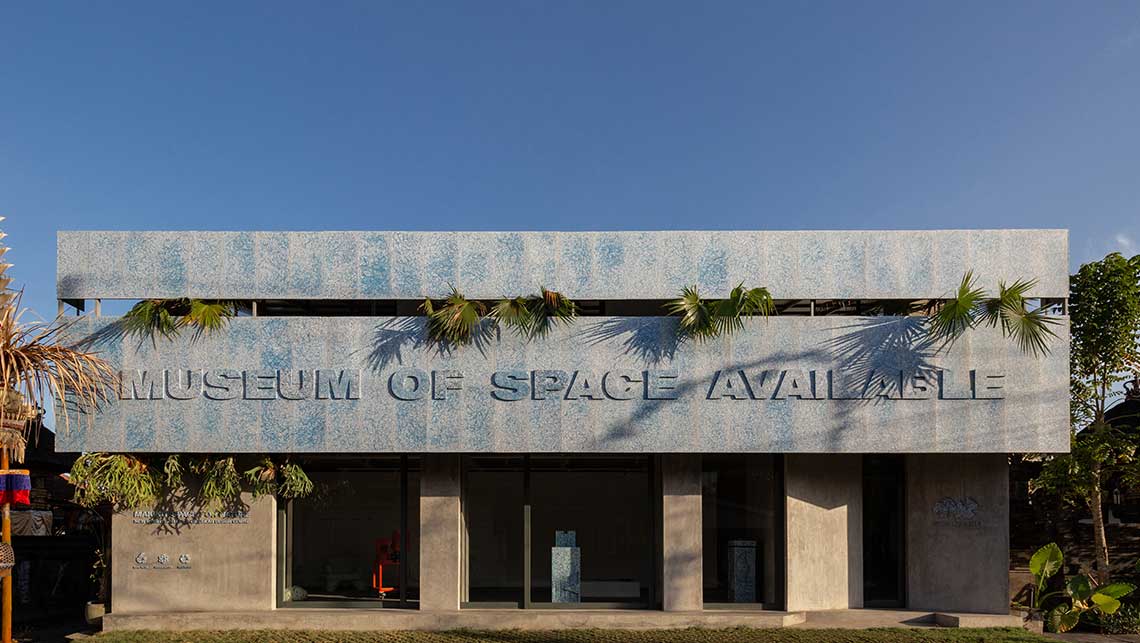Space Available champions bio-innovation, radical recycling of waste, upcycling, and future craft, placing community is at the heart of everything they do. We spoke to team leader Dan Mitchell.

Dan, what inspired you to start Space Available, and how did you come up with the name?
We launched Space Available in 2020 in the midst of the pandemic. Although it was a challenging time with many businesses closing down and people getting sick, I saw an opportunity for us to pause, reflect and reimagine the future. It was a time to reconnect and redesign, and the empty void that the pandemic created gave us the ‘space available’ to think deeply and rebuild, learning
from past mistakes.
For many years, I had worked within the circular design space, and we championed these ideas at Potato Head where I had been Creative Director since 2014. I have been exploring ecological progressive design and sustainability for some time, but we felt that change was happening too slowly in the culture space. The pandemic caused a huge disruption, and as history shows, it is during times of turmoil that big ideas grow. This is when I started the platform to share thoughts and ideas on what the future could look like.
At the same time, the commercial side of Bali came to a standstill, and hotels, beach clubs, and brands closed. Advertising budgets were slashed, and all the billboards on the island were empty, just saying ‘space available’. Given the circumstances, the name felt fitting and highlighted what was happening.

Can you explain the philosophy behind Space Available and how it guides your work?
Our mission at Space Available is to ‘make space for nature’ and drive a circular future. We believe in changing the perception of “waste” by extracting plastic waste that humans leave in nature and recycling it to produce art, furniture, and homeware. In addition, we have built a museum in Canggu to showcase our work. Our ultimate goal is to remove plastic from the oceans and instead place it in a museum, as we believe plastic pollution is a problem that needs to be addressed at a deeper level and should sit in a museum and not in the ocean! We also explore alternative materials such as mycelium/fungi, seaweed and other bio-based materials that we see as the future of sustainable, regenerative living.

How has living in Bali influenced your creative approach to sustainability?
After living in London for 10 years, I moved to Bali in 2014. Bali was a way for me to reconnect with nature and explore new sustainable practices. I have always been drawn to the island’s culture, energy, and crafts since my wife (who is Indonesian) brought me here 15 years ago. Moreover, I appreciate the strong sense of community that exists here. People in Bali are very open-minded and keen to try new things through collaboration. Bali has traditional wisdom that is embedded in everyday practices, handcrafts, the use of natural materials, and high sense of hyper-localism. I believe that Bali holds many answers to achieving sustainability, and we are constantly seeking new ways to integrate traditional practices into our modern context within our studio, both respectfully and collaboratively.

What does community mean to you, and how do you relate it to Space Available and your life in Bali?
Community is at the heart of everything we do at Space Available, whether it is the local community here in Bali or our global network of collaborators. With education being a key component of our circular design ecosystem, we are currently establishing a school that will champion the new movement of circular design across upcycling, recycling, and bio-design. We will work with artists from Bali as well as from around the world such as to offer free classes and workshops to the community. We firmly believe that the concept of community is crucial to achieving our goal of creating a circular future and regenerative practices, that benefit both the environment and society.
Who do you collaborate with, and how important is it for you to be part of a bigger vision?
At Space Available, we collaborate with local artists such as Nano Uhero, as well as established global brands like Nike and Brain Dead. We also work with people within the cultural space such as Peggy Gou and Alex Olson. Additionally, we collaborate with businesses and companies to help them apply circular design practices to their operations. Offering architectural, interior, design and branding services. Collaborating with others who are committed to creating change essential in amplifying the mission.

How has your background in skateboarding and music influenced your approach to design and sustainability?
Skateboarding and music were crucial in shaping my creative perspective as a kid. I grew up spending time with skaters, who were often considered outsiders at that period growing up in Newcastle, England. They gave me a strong sense of community. This exposure to alternative cultures introduced me to art and design, which has greatly influenced my work. I see radical circular design as a form of modern culture, and my background in skateboarding and music has helped me approach it from a different perspective.
How do you incorporate nature and wildlife into your work, both aesthetically and practically?
At Space Available, we are inspired by the circular nature of the natural world, and we incorporate it in both our aesthetics and practices. Nature never wastes anything, and the regenerative systems that exist within it provide us with a blueprint to work with. Circularity runs through all of our work and we explore modern bio-materials in the lab, such as mycelium and seaweed which we see as the future. By incorporating these practices, we hope to create a harmonious relationship between humans and nature through our work.

Can you talk more about the Museum of Space Available and its role in your creative practice?
The Museum of Space Available is a new world gallery and circular design centre that showcases the works of our studio, as well as a global network of artists and designers who are working in the fields of bio-innovation, radical recycling of waste, upcycling, and future craft. Located in Canggu, Bali, it goes beyond just being a store, offering visitors the opportunity to engage with our ethos and be part of the global conversation around circularity and regenerative art and design. With this space, we strive to tell important stories about culture and history through a more meaningful and deeper lens.

How do you think Space Available can impact the wider fashion and design industries in terms of sustainability?
At Space Available, we are currently in some of the world’s most renowned retailers, including Mr. Porter, Selfridges, Dover Street Market, and Slam Jam. Through our presence in these globally influential stores, we’re able to start a conversation about what circularity means within the fashion and design space. Additionally, we collaborate with other brands and artists to amplify our mission even further. By championing circular practices and creating a dialogue around them, we hope to inspire change in the wider fashion and design space.

What are your future plans for Space Available, and how do you hope to continue to innovate in the sustainable fashion and design space?
At Space Available, ‘education, conversation collaboration’ is our approach within a circular design ethos, and we have exciting plans for the future. We are launching a circular design school in Bali to teach people about radical design practices and circularity. Additionally, we are collaborating with brands from all over the world to create global pop-up shops showcasing the value of making things from waste. Our iconic Peggy Gou collaborative chair will soon be available in new colours that people have been eagerly awaiting. Furthermore, we will be launching a series of exhibitions at the Museum throughout the year, including our upcoming “Mycelium Network” show in collaboration with LA’s Brain Dead and the second floor of the museum. By continuing to explore new materials and practices, collaborating with other brands and artists, and engaging in meaningful conversations about circularity, we hope to continue innovating in the design space and inspire others to join us in creating a more circular experience.
IG: @space_availabe_
FB: @SpaceAvailable.tv
www.spaceavailable.tv